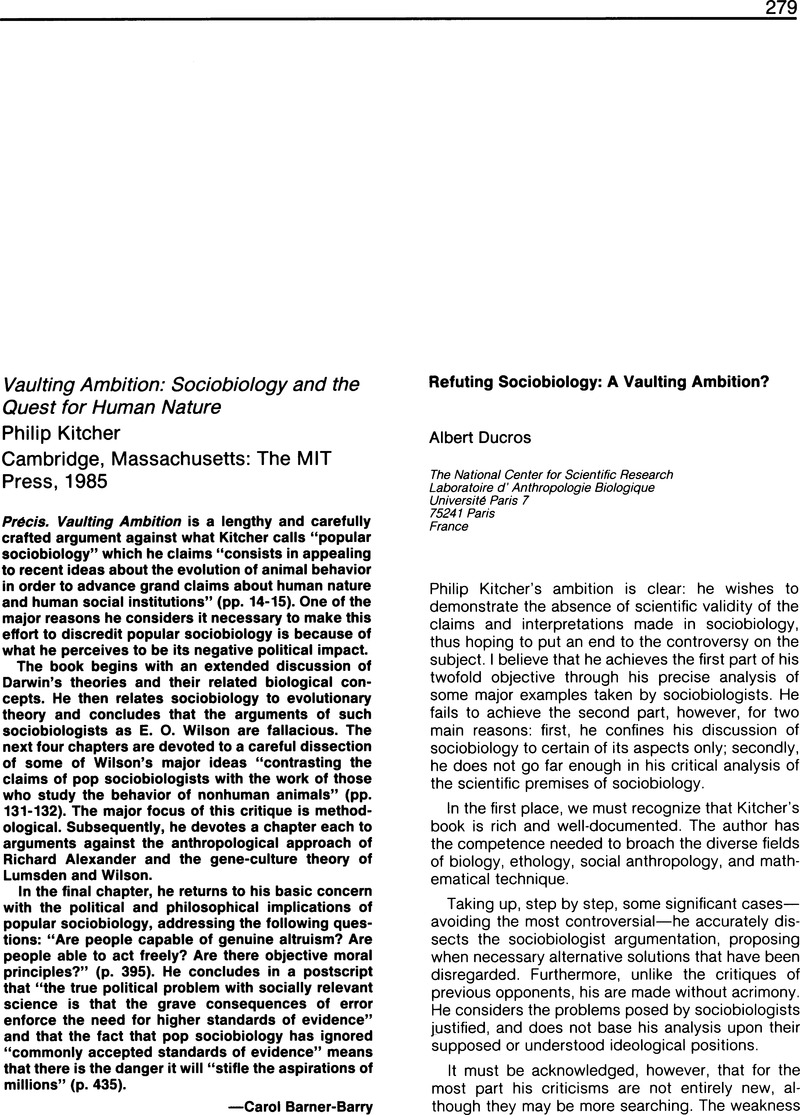No CrossRef data available.
Article contents
Refuting Sociobiology: A Vaulting Ambition?
Published online by Cambridge University Press: 17 May 2016
Abstract
An abstract is not available for this content so a preview has been provided. Please use the Get access link above for information on how to access this content.

- Type
- Book Reviews
- Information
- Copyright
- Copyright © Association for Politics and the Life Sciences
References
Guillaume, I. (1985). “La biosociologie d'Espinas et la sociobiologie de Wilson, deux systèmes de pensée comparables.” In “Sciences Sociales et défi de la sociobiologie.” Revue Européenne Des Sciences Sociales (Genève) 23 (69): 139–156.Google Scholar
Lorenz, K. (1965). Uber tierisches und menschliches Verhalten. München: R. Piper & Co Verlag.Google Scholar
Queller, D. C. (1985). “Kinship, Reciprocity and Synergism in the Evolution Of Social Behavior.” Nature 318: 366–367.Google Scholar
Sahlins, M. (1977). The Use and Abuse of Biology: An Anthropological Critique of Sociobiology. London: Tavistock Publications Ltd.Google Scholar
Stebbins, G. L., and Ayala, F. J. (1985). “The Evolution of Darwinism.” Scientific American 253 (1): 54–64.CrossRefGoogle Scholar


